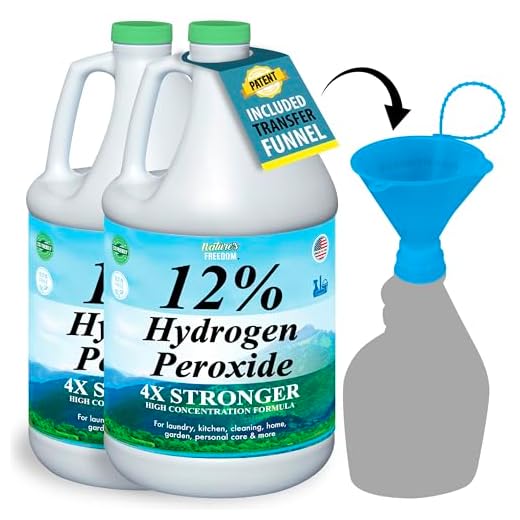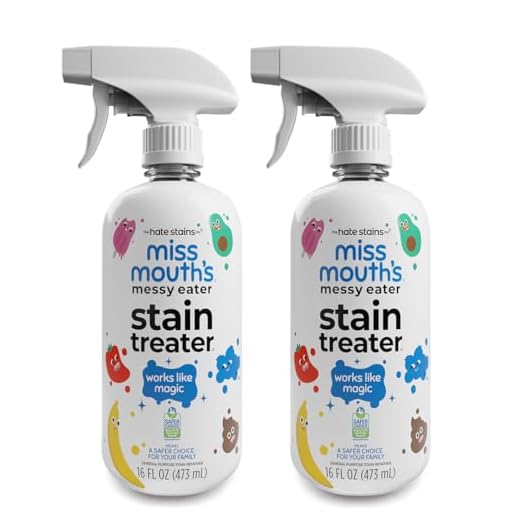

Immediately apply cold water to the affected area. This action helps to dilute the pigment and prevents it from setting further into the fibers. Blot gently with a clean cloth to lift as much of the liquid as possible without rubbing.
Next, create a mixture with equal parts of hydrogen peroxide and dish soap. This solution acts as a powerful cleansing agent. Apply it directly to the discoloration and let it sit for about 30 minutes. Afterward, rinse thoroughly with cold water.
If remnants persist, consider using white vinegar combined with water in a 1:1 ratio. Apply this blend to the fabric and let it soak for an additional 15 minutes. This method can often break down the remaining pigments effectively.
Finally, launder the item as per the care instructions. Avoid using heat until you are certain the marks are completely gone, as high temperatures can set any lingering traces.
Understanding the Chemistry of Wine Marks
To effectively tackle the challenge of removing these blemishes, it’s crucial to grasp the underlying chemical properties. The pigments in a specific beverage, known as anthocyanins, are responsible for the deep coloration. These compounds bind tightly to fibers in fabric, making removal difficult.
Additionally, the presence of tannins can exacerbate the situation. Tannins, which originate from grape skins, seeds, and stems, can react with proteins in the fabric, creating a more permanent bond. This interaction is why immediate treatment is often more effective than waiting until the liquid has dried.
pH Levels and Their Role
The acidity or alkalinity of a cleaning solution can significantly influence the outcome. A more acidic environment can help break down the bonds formed by tannins, while alkaline solutions may not be as effective. Therefore, using a solution with a balanced pH can be beneficial when addressing these issues.
Practical Applications
Utilizing salt or baking soda can aid in absorbing the liquid before it sets in. These substances can help lift the color by drawing it out of the fabric. Additionally, enzyme-based cleaners can break down organic materials, including those pesky pigments and tannins, enhancing the likelihood of successful removal.
Gathering Necessary Supplies for Stain Removal
Start with a few common household items that will aid in tackling those unsightly blemishes. Ensure you have the following on hand:
| Item | Purpose |
|---|---|
| White Vinegar | Neutralizes pigments and helps lift the discoloration. |
| Dish Soap | Breaks down oils and assists in the cleaning process. |
| Baking Soda | Acts as an abrasive to scrub away residue effectively. |
| Hydrogen Peroxide | Lightens and removes deep-set colors from fabric. |
| Clean Cloths or Paper Towels | Helps blot and absorb the solution and stain. |
| Cold Water | Rinses the area and prevents the stain from setting further. |
| Stain Remover Spray | Designed specifically for treating tough blemishes. |
Having these materials ready will streamline your approach and enhance your chances of success. For a refreshing break after your cleaning efforts, consider exploring how to cook fresh spinach in a skillet for a delightful meal pairing.
Pre-treating the stain before washing
Apply a generous amount of cold water to the affected area immediately. This helps to lift the pigmentation from the fibers. Next, use a clean cloth to blot, not rub, the area to prevent further embedding of the color.
Choosing the Right Pre-treatment Solution
For best results, consider using a blend of liquid laundry detergent and white vinegar. Mix one part detergent with two parts vinegar, and gently work this mixture into the fabric. Allow it to sit for about 30 minutes to break down the color compounds.
Commercial Stain Removers
If you prefer a store-bought option, select a stain remover specifically designed for tough discolorations. Apply it directly to the mark, following the instructions on the label. Be sure to test on a small, inconspicuous area first to avoid damage.
Once you’ve pre-treated the area, rinse with cold water before moving on to the washing process. This step ensures that any remnants of the treatment are removed and does not interfere with the subsequent wash cycle.
Choosing the Right Washing Method for Stained Fabrics
Select an appropriate washing technique based on the fabric type and stain severity. For delicate materials like silk or lace, opt for hand washing with a gentle detergent. This minimizes agitation that could damage the fibers.
Machine Washing
If the fabric can withstand machine washing, follow these guidelines:
- Use cold water to prevent setting the discoloration.
- Choose a gentle cycle for sensitive fabrics or a regular cycle for sturdier textiles.
- Incorporate a stain remover designed for fabric types when loading the washer.
Hand Washing Technique
For hand washing, adhere to these steps:
- Fill a basin with cold water and add a small amount of mild detergent.
- Soak the affected area for 15-30 minutes without scrubbing.
- Gently rub the fabric with your fingers to help lift the discoloration.
- Rinse thoroughly under cold running water until the detergent is fully washed away.
After washing, air-dry the item away from direct sunlight to avoid fading. Always inspect the area before drying; heat can set any remaining discoloration. Repeat the washing process if necessary until the fabric is restored to its original state.
Using Household Items for Stubborn Marks
Baking soda effectively tackles tough discolorations. Mix three parts of baking soda with one part of water, creating a paste. Apply it directly onto the affected area, gently rubbing it in. Allow this mixture to sit for at least 30 minutes before rinsing.
White vinegar acts as a natural agent for lifting persistent marks. Combine equal parts of vinegar and water in a spray bottle. Spray the solution directly onto the discoloration and let it sit for 20 minutes. Blot with a clean cloth, then rinse thoroughly.
Dish soap can be an excellent option for treating these blemishes. Apply a few drops of liquid dish soap directly onto the mark, gently working it into the fabric with your fingers. Rinse with cold water after a few minutes.
Using Salt and Club Soda
Salt absorbs moisture and can help remove residual coloration. Sprinkle salt generously over the mark, allowing it to sit for about 10 minutes. Rinse with cold water afterward.
Club soda is another effective remedy. Pour a small amount directly onto the area and blot with a clean cloth. The carbonation helps lift the pigments while the liquid dilutes the mark.
Hydrogen Peroxide and Dish Soap Mixture
For tougher challenges, mix equal parts of hydrogen peroxide and dish soap. Apply this solution to the blemish and let it sit for 30 minutes. Afterward, rinse thoroughly with cold water.
Always test any home remedy on a hidden area of the fabric first to ensure it won’t cause damage. Following these methods can help restore your fabric to its original condition.
Preventing Future Stains from Red Beverages on Fabrics
Opt for stain-resistant clothing. Fabrics treated with special coatings repel liquids, minimizing absorption and making clean-up easier.
Be cautious during social gatherings. Use coasters and avoid placing glasses directly on fabric surfaces to reduce the risk of spills.
Immediate Action
Address any accidental spills instantly. Blot the area with a clean cloth or paper towel to absorb excess liquid before it penetrates the fibers.
Regular Maintenance
Incorporate a laundry pre-treatment into your routine. Apply a stain-removing product to potential problem areas before washing to provide extra protection.
Store wine bottles upright whenever possible to prevent leaks that could lead to unforeseen mishaps.







